South Korea offers fascinating historic sites and bustling cities in addition to the K-pop, kimchi, and K-dramas for which it is now famous across the world. Situated between China and Japan yet still maintaining its own distinct culture and traditions, this great economic power is also home to some breathtaking beauty and wildlife places.
The glistening waters of the Yellow Sea and the Sea of Japan flank the northern border of the “Land of the Morning Calm,” which occupies the southern part of the Korean Peninsula. It is mostly mountainous, but it also has beautiful hills, forests, and plains, and its long, beautiful coastline is dotted by a chain of almost three thousand islands, most of which are small and deserted.
Surprisingly, more than half of South Korea’s population resides in and around the capital city of Seoul, making it one of the biggest and greatest cities in the world. It is home to old palaces and temples that have stood the test of time, but also to modern shopping malls and buzzing night markets. Its cutting-edge technology and forward-thinking young culture have also had an international effect.
Gyeongbogkung Palace and the National Museum of Korea in Seoul are popular stops for tourists before they go on to either Gyeongju or Busan. The former is a favorite spot to rest and unwind because of its magnificent beaches and hot springs, while the former is known for its abundance of stunning royal tombs, temples, and cultural events.
Besides the magnificent mountains of Seoraksan National Park and the still-active folk villages of Andong, Jeju Island’s lush subtropical beauty and many amusement parks also draw a large number of tourists. Visitors seeking a little more excitement can visit the highly fortified demilitarized zone (DMZ) that separates South Korea from its northern neighbor.
Gyeongju, South Korea, is known as “the museum without walls” because of the incredible number of ancient tombs, temples, burial mounds, and rock carvings that can be found there. Many of Gyeongju’s monuments date back more than a thousand years; the city was originally the capital of Silla, an ancient kingdom on the Korean Peninsula, so seeing its spectacular architecture and old structures is one of the best things to do there.
Despite its convenient location, the southeastern city of Gyeongju is typically disregarded in favor of more well-known destinations like Seoul, Busan, and Jeju. This makes it an ideal destination for those who wish to see South Korea’s heritage and history away from the madding crowds.
Gyeongju’s stunning surrounding hills and mountains are the icing on the cake after a day spent exploring the city’s preserved historical attractions and winding streets that will take you back in time.
10. Bomun Lake
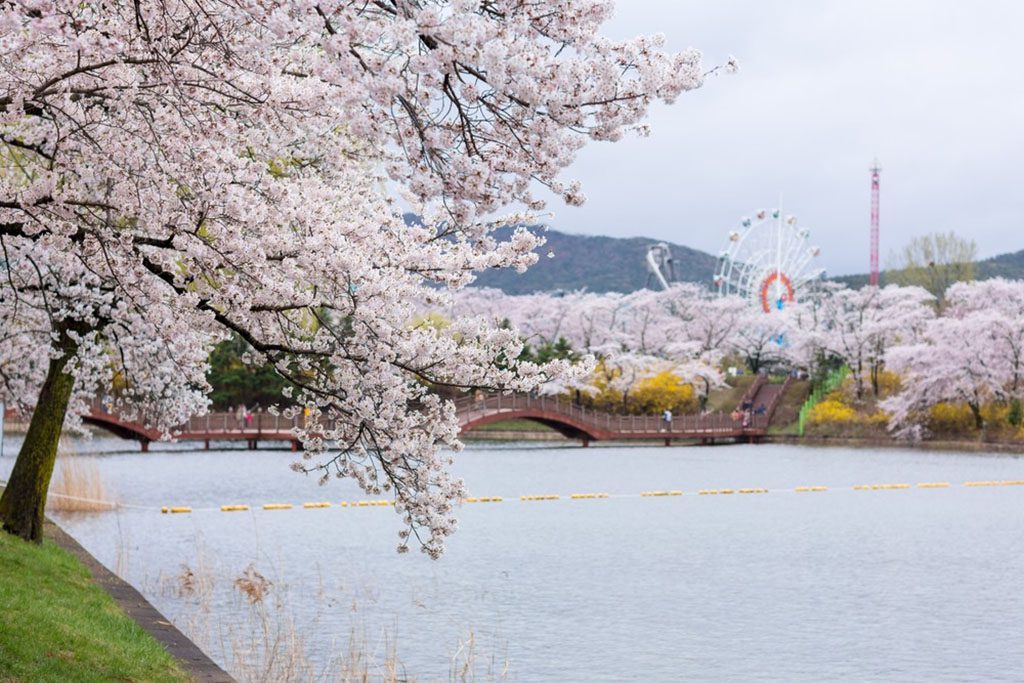
Bomun Lake, a man-made lake in the city of Gyeongju, is a popular destination for locals and visitors alike due to its proximity to several parks and posh establishments. Bomun Lake is about five kilometers from the heart of the city, and it offers a number of pleasant walking and cycling routes around the lake. Enjoy a game of golf at a luxurious resort or go boating on the calm waters.
There are events at the Bomun Outdoor Performance Theater every weekend from April to August, and the permanent exhibits at the Seonjae Art Gallery are also worth seeing if you’re in the area. Bomun Lake is beautiful and serene year-round, but summer and spring, when the cherry blossoms are in bloom, are peak times for tourists.
9. Gyeongju National Park
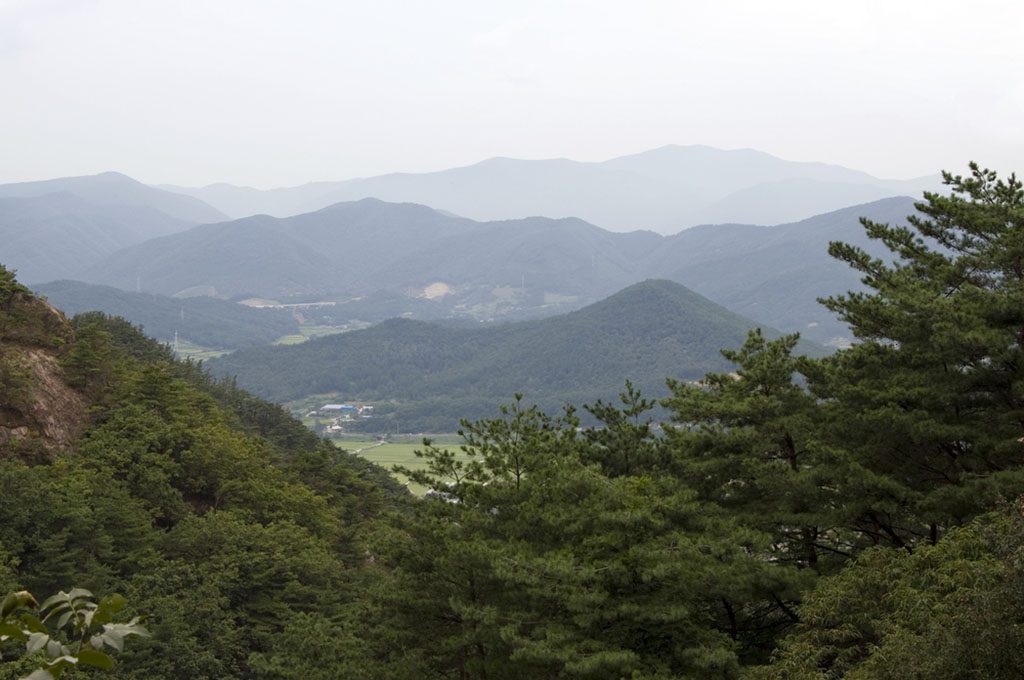
Gyeongju National Park, established in 1968, is the only national park in the country with a primary focus on the preservation, protection, and promotion of the park’s abundance of historical attractions.
This implies that parts of the national park can be found both outside of Gyeongju and inside the city limits. For this reason, you may visit one of the stunning tombs, temples, or burial mounds strewn throughout town without realizing you’re really in the national park.
Gyeongju National Park, located farther out, has stunning scenery and several excellent hiking opportunities in the surrounding hills and mountains. For example, on the slopes of Tohamsan Peak, you’ll discover Bulguksa and Seokguram, two of the most well-known temples in all of Gyeongju, and the view from the peak is nothing short of breathtaking.
8. Daereungwon Burial Mound
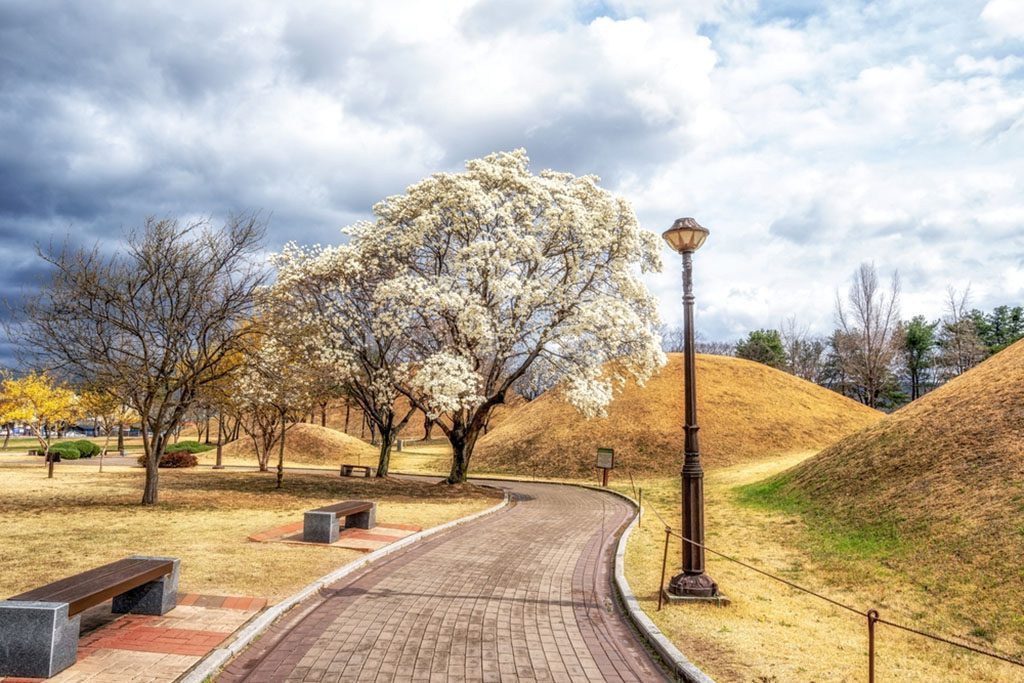
Daereungwon Burial Mound, in the heart of Gyeongju, is a complex housing 30 royal tombs from the period of the Silla Kingdom and is hence one of the city’s most visited tourist attractions.
The enormous grassy mounds stand out amid a handful of beautiful parks. Some of the tombs in this city are over 20 meters tall, so they are impossible to miss as you explore the area.
Hwangnam Daechong’s and King Michu’s tombs, both of which are over a thousand years old, are the most remarkable. You can take a leisurely walk around the grounds or you can go into the most well-known mound, the Cheonmachong Tomb, to see some of the many treasures that were unearthed there.
7. Gyeongju National Museum
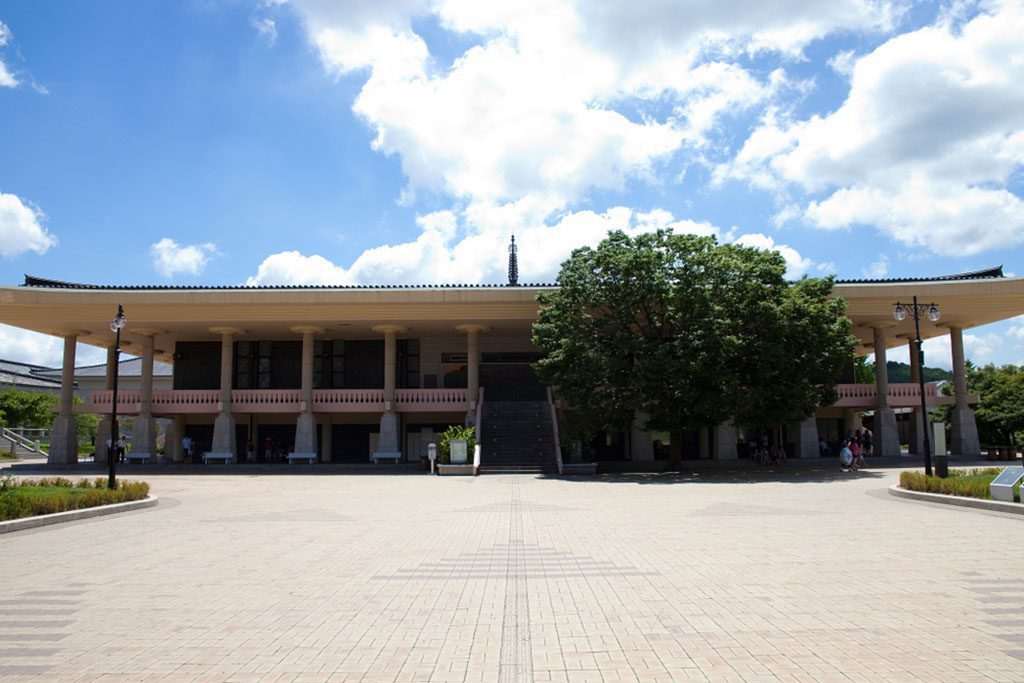
Gyeongju National Museum, widely regarded as one of the best in the country, is the place to go if you want to know all there is to know about the Silla Kingdom and the development of civilization in South Korea.
A collection of structures next to the Daerungwon Burial Mound complex, it houses several educational and entertaining exhibits and displays, including numerous pieces of glittering jewelry, ancient weapons, and revered religious works.
The crown of Geumgwanchong, made of gold in the fifth century, is one of the most spectacular and artistically ornamented objects in the museum. A visit to the Gyeongju National Museum can take up a whole day or more, what with all the stupas, sculptures, and statues dotted about the museum’s buildings and grounds.
6. Yangdong Folk Village
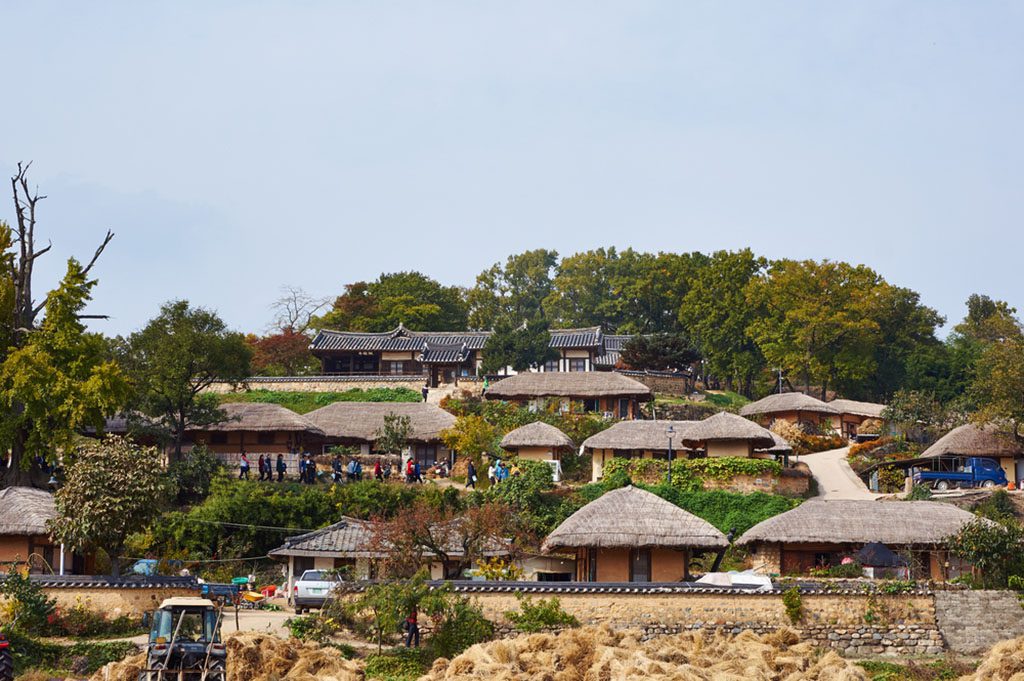
The Joseon-era structures and houses in Yangdong Folk Village are stunning, making the area a pleasure to explore. The resort’s location in a green valley surrounded by mountains only enhances the picture-perfect scenery.
These buildings were constructed in the classic Joseon Dynasty style and are surrounded by beautiful gardens; many of them are still occupied by their original families. The village, located about 20 kilometers to the north of Gyeongju, is difficult to get to but well worth the trouble for those who want a genuine glimpse into Korean rural life.
5. Cheomseongdae Observatory
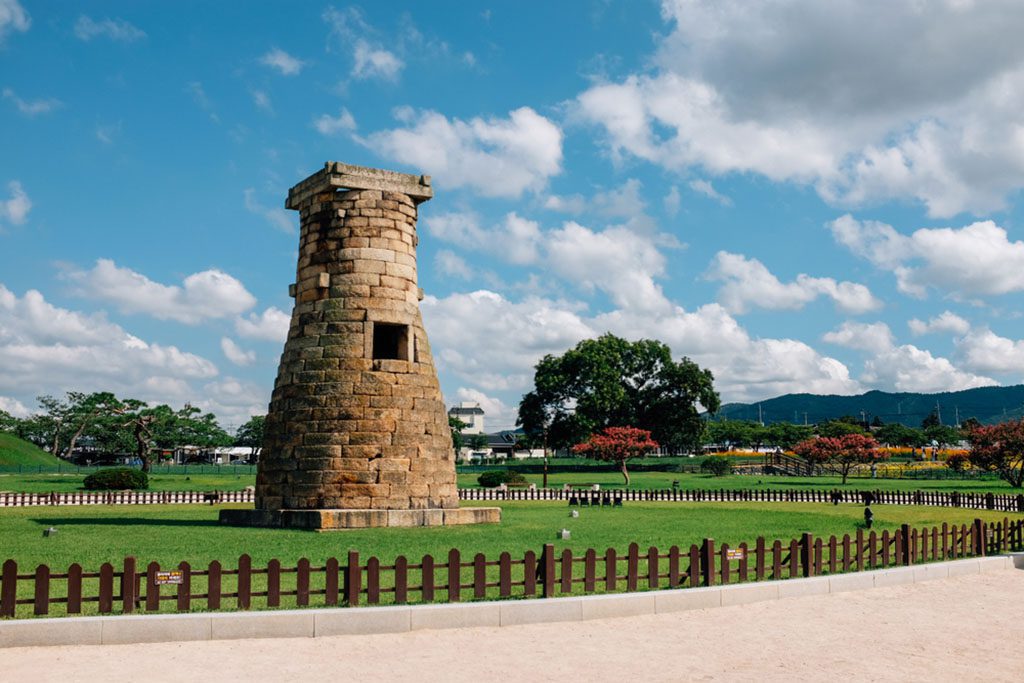
Although not very impressive to look at, Cheomseongdae is of unparalleled historical importance, being the oldest surviving astronomical observatory in not just Asia but arguably the whole world. The ancient structure, which dates back to the reign of Queen Seonduk in the year 632 AD, is slightly over nine meters in height. Recently, beautiful gardens have been built all around it.
Astronomers have visited Cheomseongdae Observatory for centuries to look at the stars and planets in the sky, and legend has it that the observatory was constructed using 365 stones, one for each day of the year. A visit to the observatory at night is highly recommended since the tower looks fantastic against the starry backdrop.
4. Seokguram
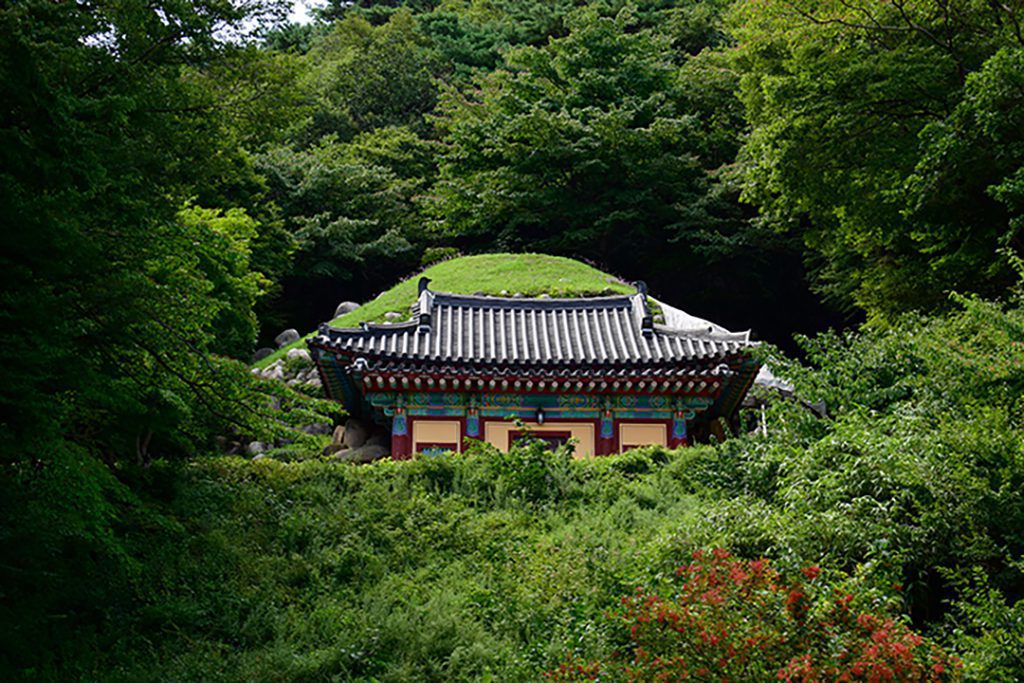
Seokguram is one of the most significant historical, cultural, and religious landmarks in South Korea and was therefore designated a national treasure in 1962. The Seokguram Grotto, or Bulguksa Temple, is hidden away on the slopes of Mount Tohamsan, with a view of the East Sea in the distance.
The grotto, which was completed in 774 AD, is home to a stunning Buddha sculpture that is revered as a guardian deity in South Korea. The awe-inspiring vistas of the surrounding mountains are just as captivating as the breathtaking artwork and architecture, and the grotto provides an ideal setting for solitary reflection.
3. Cheonmachong Tomb
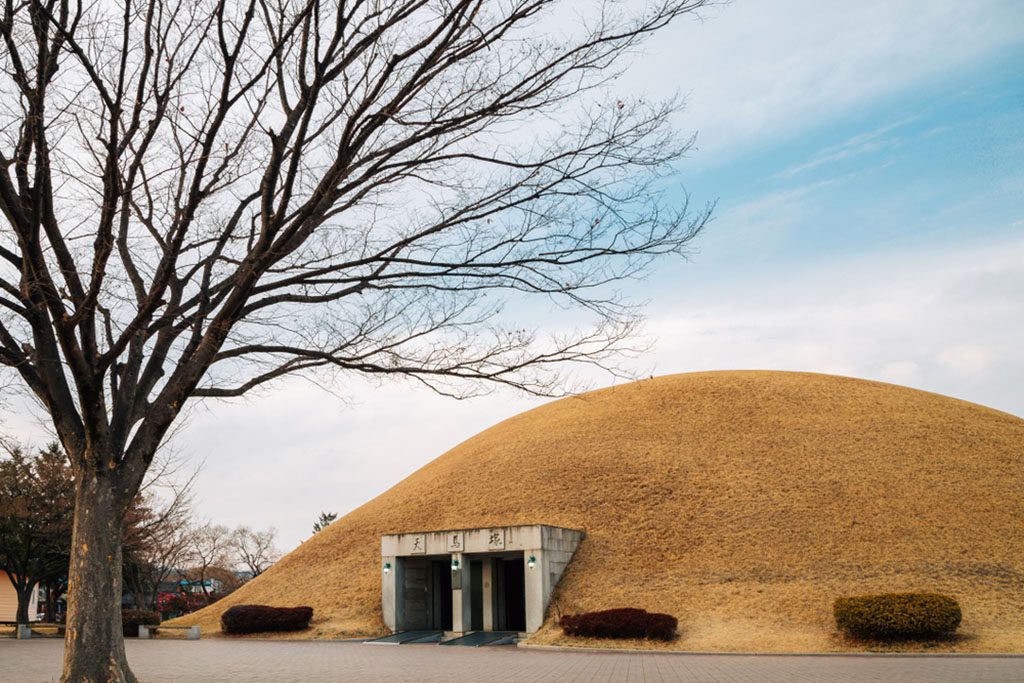
Cheonmachong, which translates to “sky horse,” was so named because a stunning artwork of a white horse was discovered during the 1973 excavation of the tomb. Surprisingly, more than 11,500 objects were discovered in the tomb. These were interesting glimpses into Silla Kingdom culture, but they didn’t help identify the monarch buried there.
This tomb, called Cheonmachong, is the only one in the Daerungwon Burial Mound complex that visitors are allowed to enter. It is said to have been built in the fifth century and is well worth exploring if you have the chance. The wooden coffin the king was buried in and his royal belongings are among the many fascinating relics on display within. The Cheonmachong Tomb, despite its modest proportions, provides a priceless glimpse into a pivotal era in South Korea’s rich history.
2. Anapji Pond
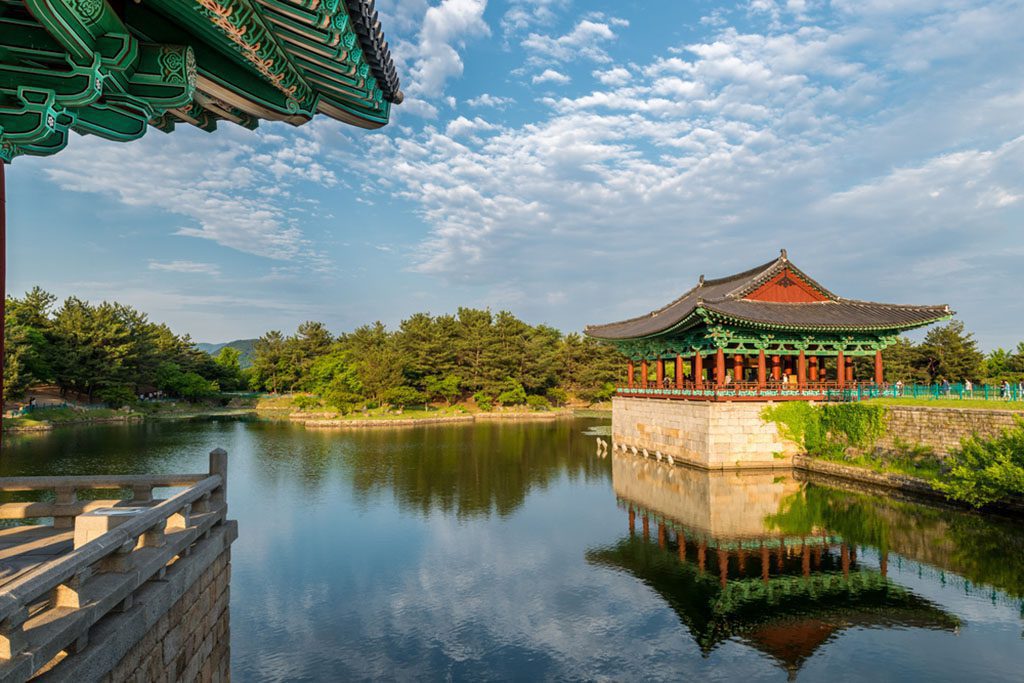
The manmade Anapji Pond, currently a part of Gyeongju National Park, was constructed in 674 AD by King Munmu to commemorate the unification of the Korean Peninsula under Silla rule and has since become one of the city’s most famous tourist destinations. Especially stunning at night, when the grounds are magnificently lighted, Anapji Pond and its surrounding gardens, as well as the beautifully restored pavilions and palaces, make for a breathtaking spectacle.
The reflection of Donggung Palace, in particular, is breathtaking. With the fall, when the pond is covered in vibrant lotus blooms, it becomes a popular picture op for newlyweds.
1. Bulguksa Temple
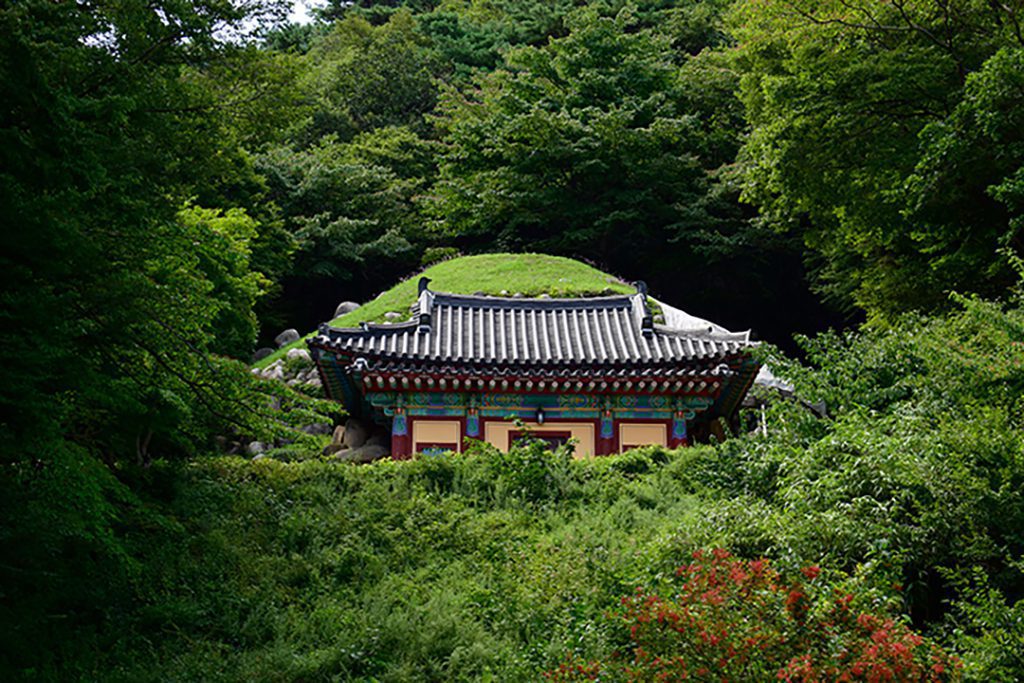
Bulguksa Temple, perched on the side of Mount Tohamsan, is a stunning example of Buddhist architecture. Many people in South Korea regard this temple as being the most beautiful they’ve ever seen. The temple was constructed in the ninth century and houses seven of the country’s national treasures, including some amazing Buddha sculptures and stone pagodas.
Beautiful architecture can be seen at every turn as you explore the temple’s various courtyards and gardens, which are in perfect harmony with the imposing mountain backdrop.
The historical and cultural significance of Bulguksa Temple is undeniable, but it is also a place of devotion, so you will often see monks and pilgrims reciting or conducting rites there. Gyeongju’s wonderful ancient temple, which is astonishingly still in use over a thousand years after it was built, is the focus of many visitors’ trips to the city.


